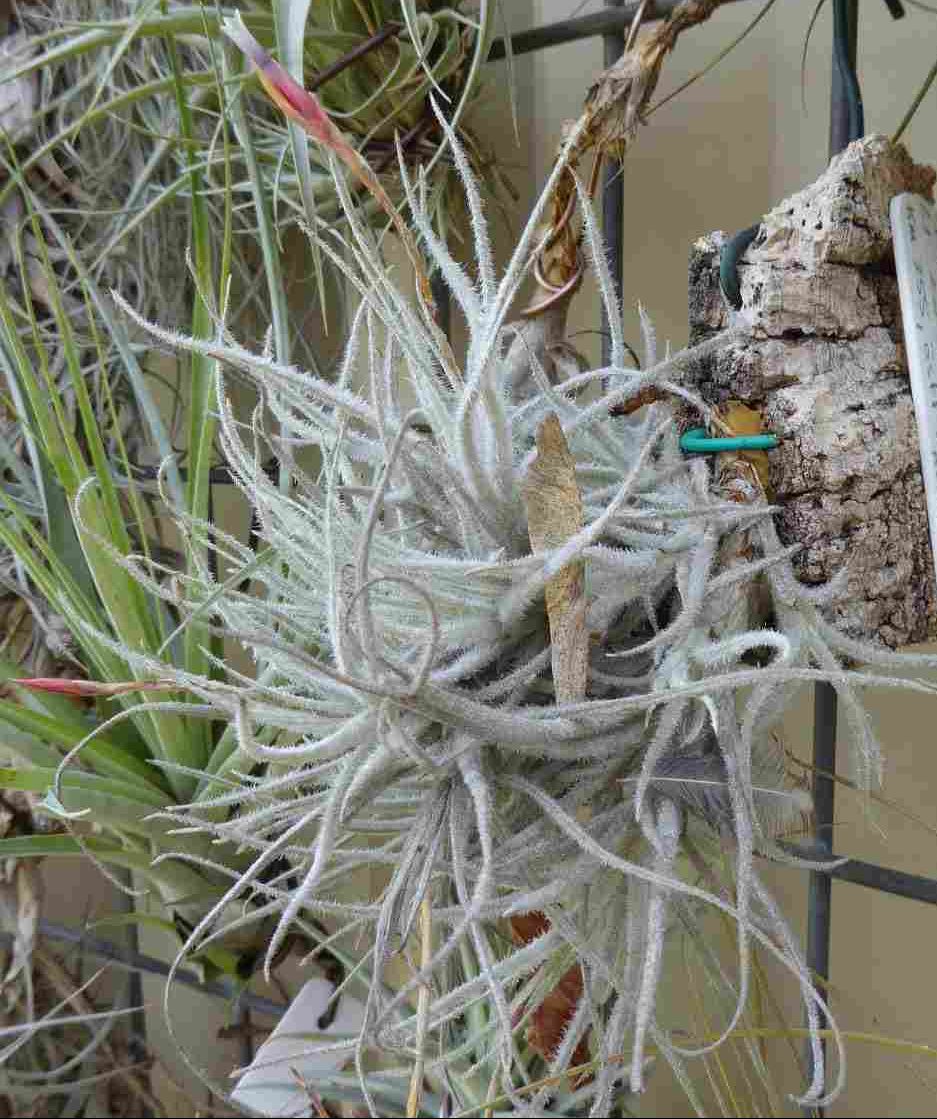
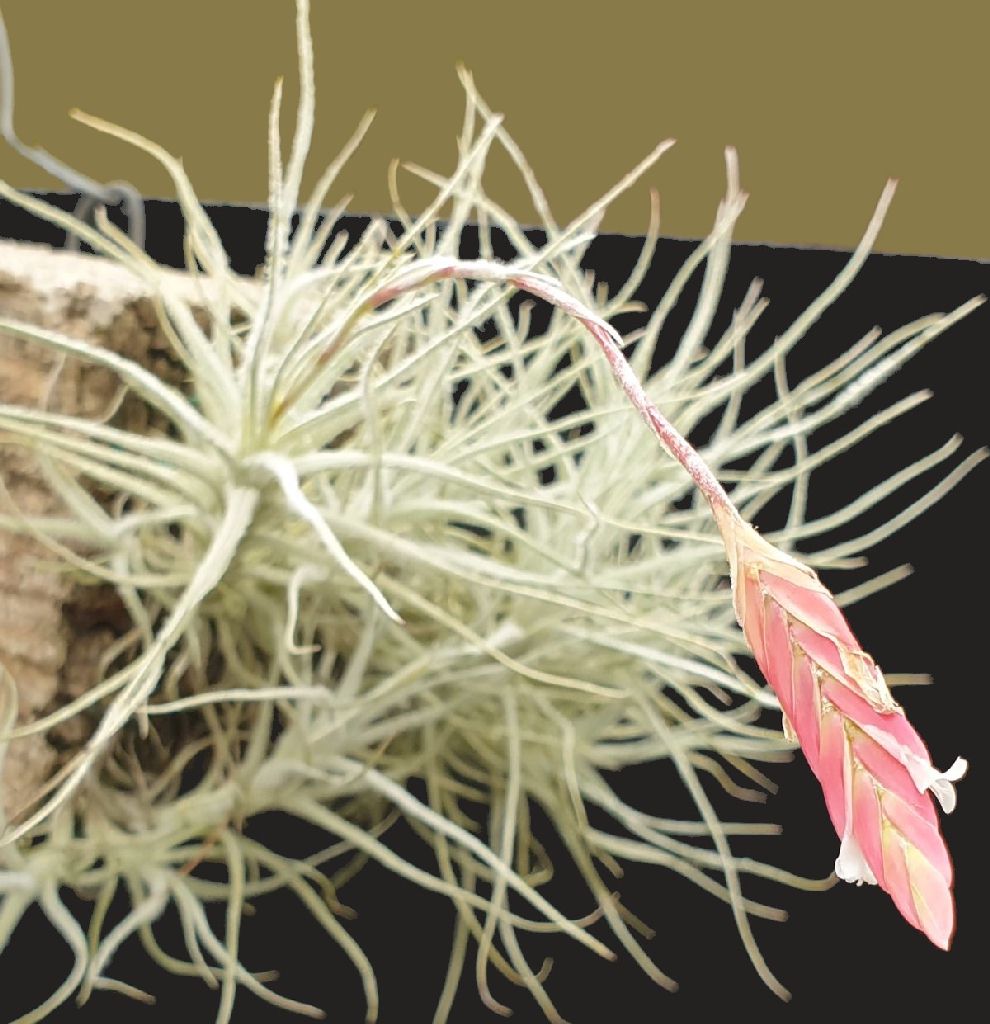
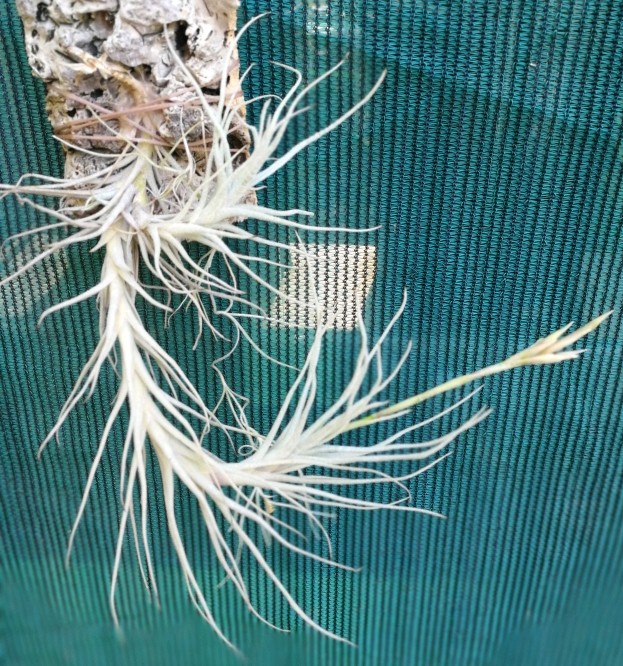
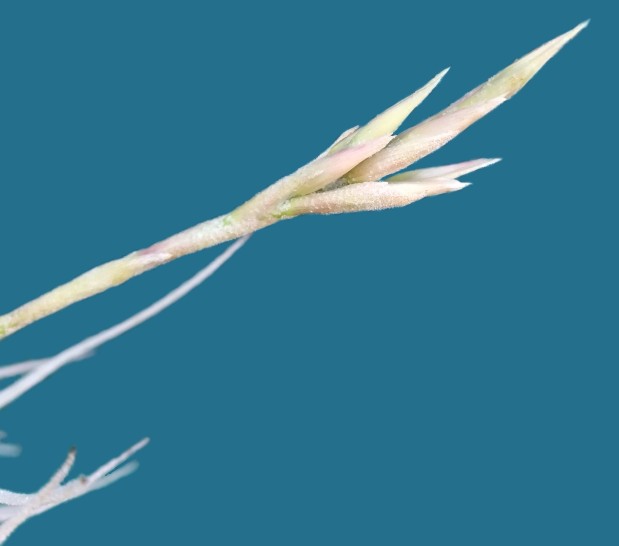
Justin Lee ... "I have this plant labelled as balsasensis. I checked the disc in regards to the branched spike. I checked both balsasensis & chusgoensis but the descriptions state simple spike for both species. Anyone else have a branched spike on either species? I suppose without flowers it may be a mute question."
Chris Larson ... "Justin: Looks like that plant from Derek. Time to have a flick through the green Tectorum book. See the closest and check the description."
Derek Butcher ... "A plant does not have to agree with ALL the description. I was fussy about that 30 years ago until Harry Luther said I had to use my judgement. In the case of balsasensis, Lotte does say simple in the description but later on sometimes branched. - See document below."
Peter Tristram ... "T. balsasensis has very distinctive floral bracts, so I suggest you wait until it blooms then repost with measurements. Maybe itís another species that didnít make it into print! Aff. (affinis as in affinity to)? Lol. I have a similar plant ex Eric that had a branched spike but these sorts bloom once in a blue moon here. Could it be a small, skinny tectorum ? Harry also said collection location was often the only hope."
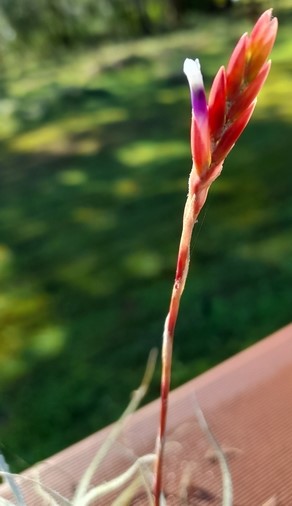
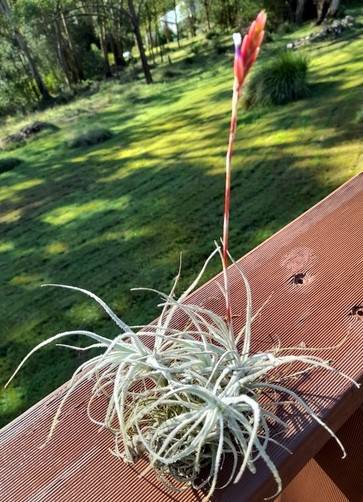
The original description of Rauh (1976), translated into English is very picturesque. Translation by Derek Butcher.
Plant growing in subdense mats, caulescent, stems slender, ascendent, flowering to 18 cm high.
Leaves rosulate;
sheaths small, 1 cm long, 6 mm wide, membranaceous, whitish-brownish;
blades to 8 cm long, 3 mm wide, narrowly triangular, filiform-attenuate, involute, completely spreading, densely and spreading white lepidote with yellowish-centered linear trichomes.
Scape erect to ascending, to 8 cm long, 2 mm wide, glabrous, even, reddish;
scape-bracts subfoliate, the sheaths of the upper ones sparsely lepidote, enfolding the scape and laminate with a short filiform and densely lepidote blade.
Inflorescence simple, a complanate, 5-6(-10)-flowered spike, 2.5-4 cm long, 5-6 mm wide;
rhachis edged, sparsely lepidote;
floral bracts densely imbricate, erect, covering the rha¨chis, 8-10 mm long, carinate towards the apex and sharply apiculate, bright red, whitish near the base, glabrous, even (nerved when dried).
Flowers sessile, white (white with a blue band);
sepals shorter than the floral bracts, 9 mm long, membraneous, glabrous, acuminate, the posterior sharply carinate, pale reddish, equally free;
petals narrowly lingulate, obtuse, to 1.3 cm long, white or bicoloured; the upper part violet to purple, white below;
stamens and pistil included.
Vegetatively, T. balsasensis is easily mistakable for a smaller form of T. tectorum. However, when flowering, it differs considerably from all taxa in T. tectorum by virtue of its slim, nearly always single spike. Furthermore, it differs from T. tectorum because of its red, glabrous, floral bracts and the white flowers, which are mostly monochromely white, according to the original description (Rauh 1976). Later, he changed this statement in parts to "flowers white or bicoloured, at the tip bluish violet to red, at the base white" (Rauh 1990: 83). The comment regarding monochrome petal colour cannot be confirmed because all of the flowering plants in our collection as well as those at the type locality had a wide violet crossband on the normally white petal just like a typical T. tectorum.
Habitat and range: This pretty, small plant is currently known only from the type locality. It forms large cushions and grows with T. spiraliflora Rauh, Vriesea curvispica Rauh and the ball cactus Matucana myriacantha Buxb. with its shining reddish-golden spines in metre-wide clumps on vertical sandstone rock walls in the Maranon valley. At a distance, the rock walls appear white.
Rauh described the plant in 1976 and hypothesised that it had remained unknown for such a long time because of its remoteness and because it had been mistaken for a dwarf form of T. tectorum, a species that does not occur in the Maranon valley. Using Smith's Tillandsia key (1977), Rauh keyed out this plant to be close to T. ehrenbergiana Klotzsch ex Baker (now T. tortilis Klotzsch ex Baker or Viridantha tortilis (Klotzsch ex Baker) Espejo). However, no close relationships exist.
In contrast to the knowledge some 35 years ago, new results (Barfuss et al., 2005) point towards a relationship between the green-flowering species from North America and the species of the T. tectorum complex.
Tillandsia balsasensis RAUH, Trop. Subtrop. Pflanzenwelt 18: 5-8 1976. See also JBS 1980 p 18-9
Tillandsia tectorum affinis, sed ab ea differt rosulis multo minoribus, foliis angustioribus, spicis simplicibus et floribus candidis minutissimis.
Habitat: in rupibus arenaceis, vallis Maranon, 20 km supra Balsas apud 1700 m s.m. in directione Leimebamba, Dptm. Cajamarca, Peru.
Holotypus: Rauh Nr. coll. 38570 in Herbario inst. bot. system. heidelbergensis (HEID).
Plant forms big, lax clusters; the simple plant has an elongated, thin, rooting stem, which ends in an erect, 15 cm high, many leafed rosette.
Sheaths small, 1 cm long, 6 cm wide, white-brownish, inconspicuous;
Blades filiform, involute, up to 8 cm long, 3 mm wide, long attenuate and densely covered with white squarrose trichomes; these are eccentric, with yellowish central cells, Scape erect, up to 8 cm long, 2 mm in diameter, glabrous, reddish;
Scape bracts basal ones subfoliate, the upper ones with a long sheath and a short, lepidote blade.
Inflorescence with a simple, complanate spike; 2.5 cm long, 5-6 mm wide, 5-6 flowered.
Floral bracts densely imbricate, erect, 8-10 mm long, sharply acute, carinate to the tip, bright-red, whitish to the base, even (nerved, when dry), longer than the sepals;
Sepals 9 mm long, membranaceous, glabrous, acute, pale-red; the posterior carinate, equally free.
Petals mostly uniform white, rarely bicolored, pale-violet at the tips, whitish to the base, postfloral reddish, 13 mm long;
Stamens and style included.
Holotype BGH nr. 38570, (HEID) Isotype (US)
Habitat Steep sandstone walls in the valley of Rio Maranon ( North Peru, Dept of Cajamarca) near 1700 m, about 12 km above the village Balsas on the road to Leimebamba.
Differs from T. tectorum
Simple (not branched) inflorescences;
Red, glabrous bracts
Uniform white (rare white-blue) petals.